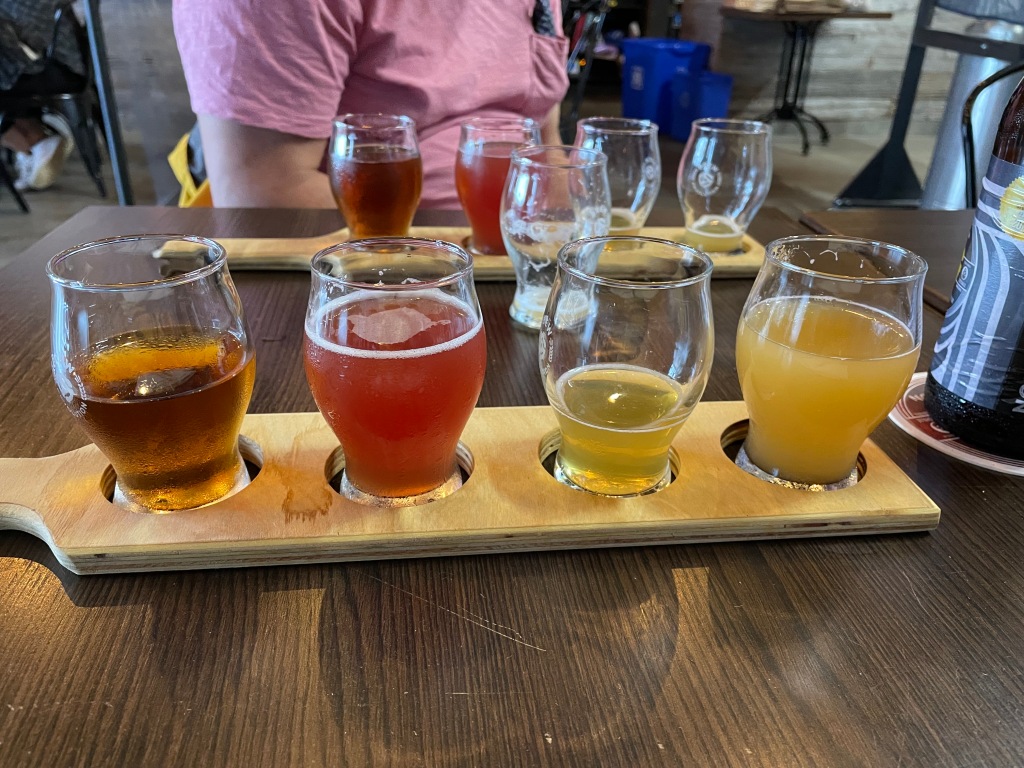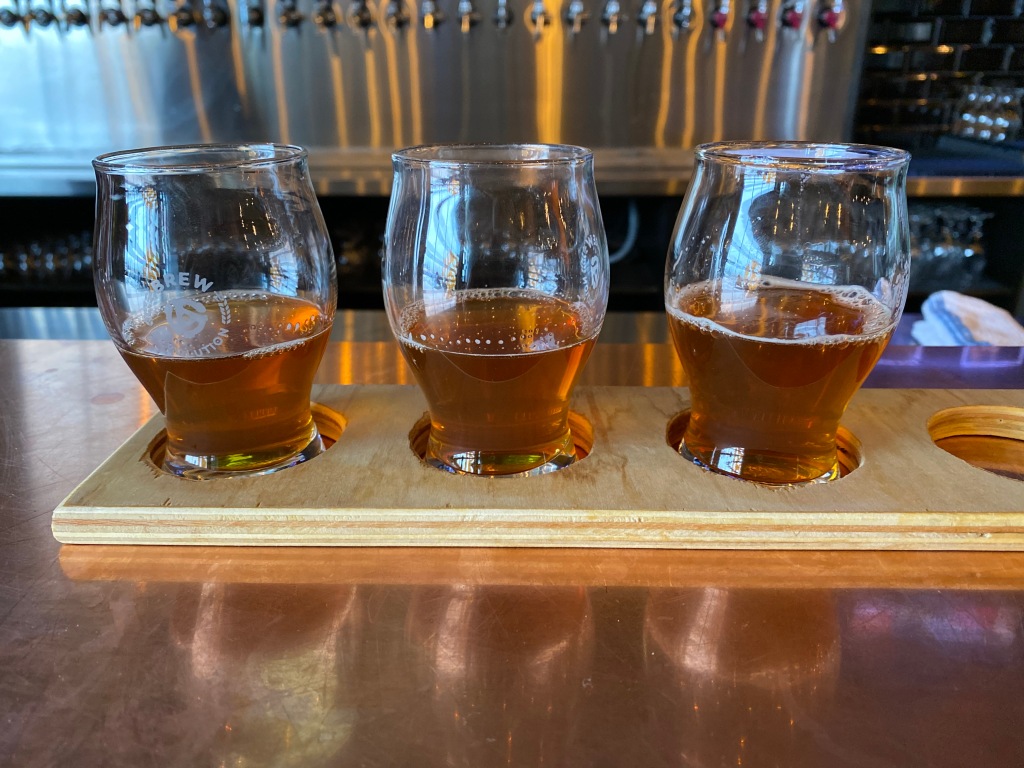
The mind can play tricks on you. If you know what you’re “supposed to taste”, then that’s probably what you’ll taste. It’s what makes a blind tasting so interesting – you really need to focus because you simply don’t know what you’re tasting until after you’re on the record.
Brew Revolution’s Vienna Lager reminds me of Creemore Springs Premium Lager, so I wanted to set up a blind tasting that included both beers. To make it interesting, we included two versions of BR’s Vienna (from the can, and on tap), Creemore Springs Premium Lager, and Waterloo Premium Amber (also characterized as a Vienna lager). The flight was poured behind the bar, and we started the tasting with no idea about the order of the beers.

Number 1: Our first mystery beer was crystal clear in the glass showing a lovely honey golden colour with hints of copper. The nose was very clean with just the tiniest bit of grainy sweetness. The taste was clean with light grassy herbal flavours. The aftertaste left a slight bitterness in the back of the mouth, which made it refreshing and very crushable.
John’s take: “Oh yeah. Can I have another?”
Number 2: Our second mystery beer was brilliantly clear with the colour of amber (like something out of Jurassic Park) and a light copper hue. The aroma was more pronounced than number 1, exhibiting floral and fruity notes with hints of dried fruit. The taste was smooth with a slightly sweeter aftertaste than No. 1. It had a lovely long floral aftertaste that was reminiscent of bread pudding, leaving no hint of bitterness on the palate.
John’s take: “I’d buy it for sure, but I liked the first one better.”
Number 3: Our third mystery beer was a lighter colour bordering on golden with similar floral and fruity notes to No. 2. This beer was noticeably sweeter than the first two, with hints of butterscotch followed by a hit of alcohol. It left a distinct sweet aftertaste in the mouth.
John’s take: “Like drinking buttery alcohol.”
Number 4: Our final mystery beer was hazy amber in the glass – by far the haziest of today’s flight. The nose brought to mind dried alfalfa bales (in a good way) while the taste was clean and simple leaving very little aftertaste.
John’s take: “It has a very narrow taste and it’s impatient – it doesn’t stick around. Just the way I like it!”
A quick look after the initial tasting left no doubt about the favourites…

And now, for the big reveal. Remember that until this point we had no idea which beer was which.
Beer No 1: Brew Revolution’s Vienna Lager on tap
Beer No 2: Creemore Springs Premium Lager
Beer No 3: Waterloo Premium Amber
Beer No 4: Brew Revolution’s Vienna Lager from the can
So there you have it. In a blind tasting, Brew Revolution’s Vienna Lager was the clear crowd favourite. Creemore Springs Premium Lager was a close second, while Waterloo Premium Amber was just a little too sweet and alcoholic (6.8%) for most.








